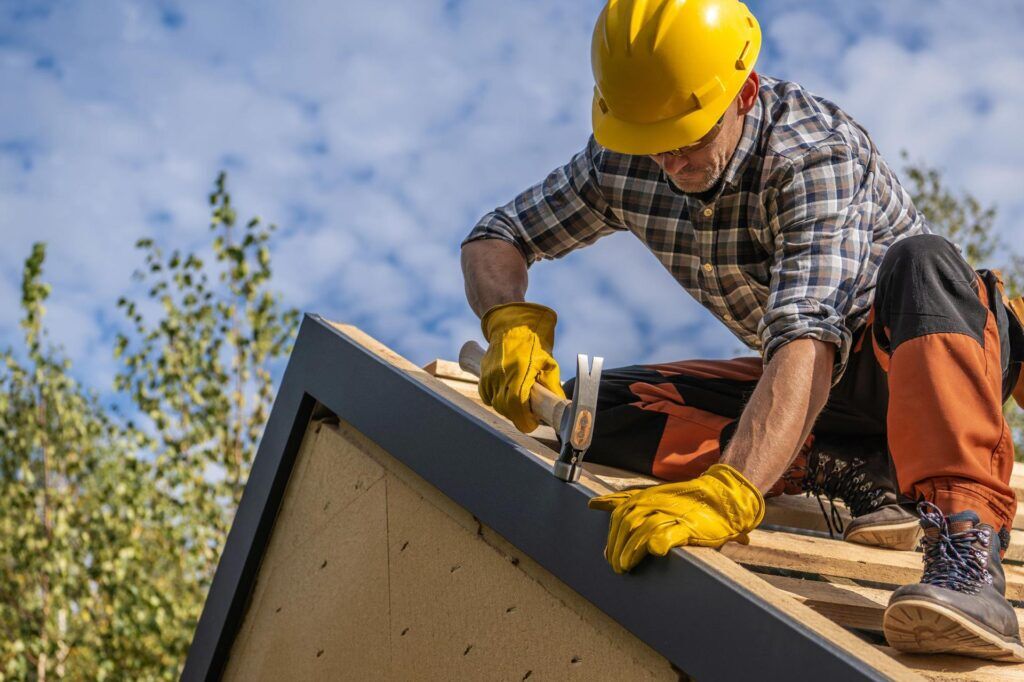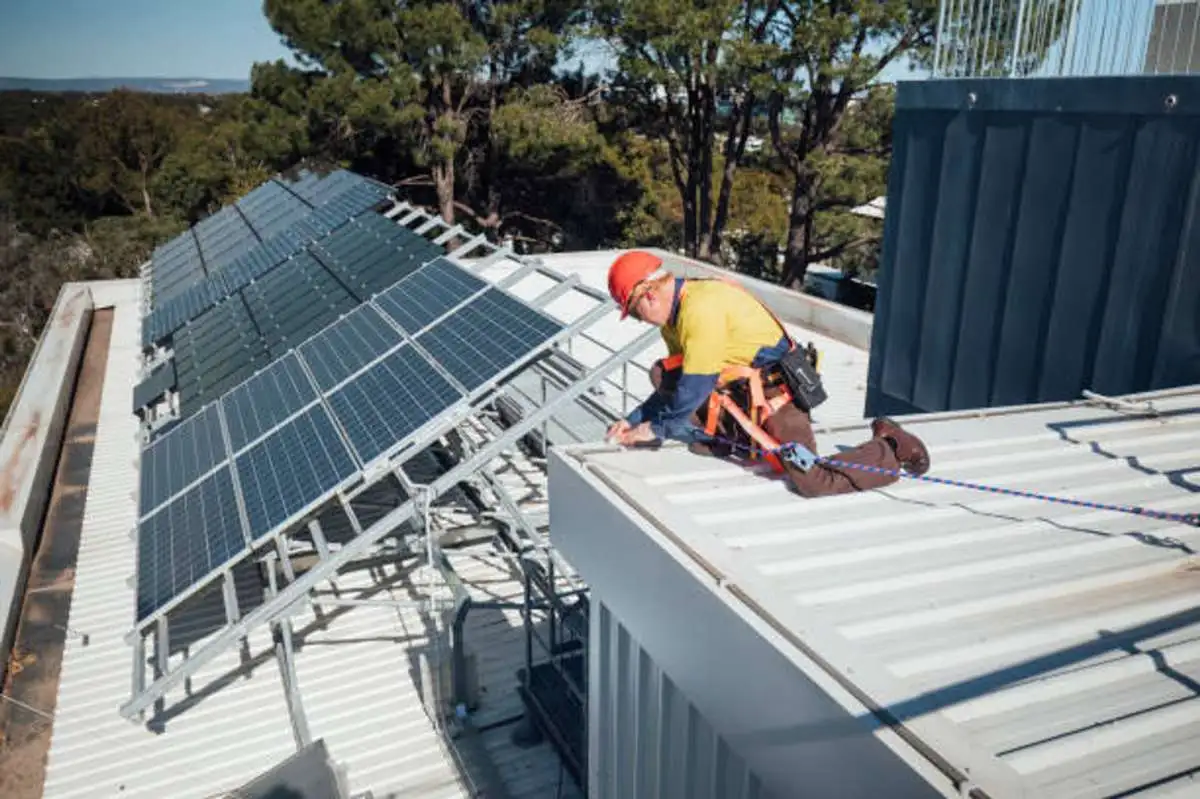Just How to Determine Usual Roof Covering Troubles and Their Solutions
When it comes to keeping your roof covering, acknowledging common problems early can save you time and money. You could see signs like water spots, missing out on roof shingles, or also moss development.
Indicators of Roofing Leaks and Just How to Repair Them
A leaky roof can transform your home right into a headache otherwise resolved without delay. You might discover water stains on your ceiling or wall surfaces, which commonly show a leak. If you see peeling off paint or mold growth, it's an indicator that wetness is entraped. Furthermore, listen for leaking audios during rain; that's a clear red flag.
To take care of these issues, begin by locating the source of the leak. Inspect your attic for signs of dampness or water entry. For more substantial damages, you might need to change shingles or also fix flashing.
Determining Missing or Damaged Roof Shingles
When checking your roofing system, look for any kind of missing or harmed tiles that might result in larger problems. An aesthetic examination can reveal indicators of water damage, which may suggest that it's time to fix or change those tiles. Addressing these problems early can save you time and money in the future.
Aesthetic Inspection Techniques
To efficiently determine missing or damaged tiles, beginning by conducting a detailed aesthetic examination of your roof. Grab a set of field glasses for a closer look, or use a ladder if you fit. Inspect for any type of shingles that are crinkled, split, or totally missing. Pay special attention to areas around valleys, smokeshafts, and vents, as these spots are susceptible to damage. Search for granules in your rain gutters or on the ground, which indicates wear. If you notice any kind of staining or uneven surfaces, that could signify an issue. Do not neglect to examine the sides of your roofing system; loosened or busted roof shingles here can result in larger concerns. Normal examinations can help preserve your roofing system's honesty.
Indicators of Water Damage
While examining your roof covering for missing or harmed tiles, look for indicators of water damages that can indicate underlying issues. Additionally, inspect the edges of your roof covering and around smokeshafts for any type of indications of rot or mold, which can hint at long term dampness direct exposure. Resolving these indications early can protect against a lot more substantial damages and pricey repair work down the line, guaranteeing your home stays protected.
Repair Service or Change Alternatives

If you uncover missing or damaged tiles during your roofing system inspection, you'll need to determine whether to repair or replace them. If just a couple of shingles are impacted and the remainder of your roofing system is in great problem, a repair work may be all you require.
However, if your shingles are curling, fracturing, or the damage is extensive, substitute could be the better choice. A new roof covering can enhance your home's aesthetic charm and power efficiency. Always take into consideration the age of your roof and your budget plan when making this choice. Consulting a roofing expert can supply valuable understandings customized to your situation.
Acknowledging Drooping Roof Coverings and Their Reasons
Acknowledging a sagging roofing is essential since it commonly signifies underlying architectural issues that need prompt attention. If you observe dips or unequal areas, do not overlook them. Start by inspecting the roof covering for visible signs of drooping, like a bowing center or drooping eaves. These might indicate troubles with the trusses or rafters.

You must also inspect for indications of wood rot, which can compromise the framework better. Don't wait; attending to the concern promptly can safeguard your financial investment and your peace of mind.
The Dangers of Moss and Algae Development
Moss and algae growth on your roofing system isn't just an eye sore; it can posture serious health risks and cause architectural damage over time. These microorganisms can endanger your roofing's integrity and produce a breeding ground for harmful spores if left untreated. Let's explore how to avoid and treat this issue efficiently
Health Hazards of Growth
While you might appreciate the all-natural elegance of moss and algae on your roof covering, it's essential to recognize the prospective carcinogen they pose. These growths can trap moisture, resulting in a moist atmosphere that advertises mold and mold. Direct exposure to mold and mildew spores can cause breathing concerns, allergic reactions, and various other illness for you and your family. Additionally, if you have family pets, they can additionally be influenced by the toxins released by particular kinds of algae. It's crucial to keep your roofing system clear of these developments to preserve a healthy and balanced living setting. Regular upkeep and cleaning can help prevent their accumulation, ensuring your home keeps safe and your air top quality stays high. Do not neglect the importance of a tidy roof!
Structural Damage Dangers
If you let moss and algae flourish on your roofing, you could be setting the stage reliable roofers near me for significant structural damage. Over time, this wetness can compromise your roof covering's structural stability, making it more vulnerable to leaks and various other issues. Ignoring these signs not only risks your roofing but likewise the whole framework of your home.
Prevention and Therapy Approaches
Neglecting moss and algae can lead to considerable concerns, but taking precautionary actions and treating any type of existing development can protect your roofing. Beginning by consistently cleaning your roofing to get rid of debris and wetness, as this creates a setting for growth. By remaining proactive and resolving these problems immediately, you can extend your roof's life-span and preserve its integrity, saving you costly repairs down the line.
Recognizing Roofing System Air Flow Issues
Appropriate roofing system ventilation is vital for preserving the integrity of your home, as it assists manage temperature and wetness degrees in the attic. Without adequate air flow, you could encounter serious issues like mold development, wood rot, and raised power expenses. Inspect your roofing system for indications of bad ventilation, such as extreme warm in the attic during hot months or condensation basing on rafters.
You should also look for irregular snow melting in wintertime, suggesting caught heat. If you discover any of these find more information indicators, it's time to review your air flow system. See to it you have a well balanced consumption and exhaust system, enabling fresh air in and stale air out.
You might need to add ridge vents, soffit vents, or gable vents to improve airflow. Regular upkeep and monitoring can avoid expensive repairs down the line, so don't ignore this crucial facet of your roof covering system.

Exactly How to Spot Roofing System Flashing Troubles
Maintaining excellent ventilation is simply one component of a well-functioning roofing system; roof covering flashing plays a vital duty in keeping your home risk-free from water damage. To find blinking problems, beginning by evaluating the areas where various roof sections fulfill, like vents, smokeshafts, and valleys.
Likewise, examine the blinking for any indications of bending or imbalance; these issues can compromise its efficiency. After heavy rainfalls, expect water stains on your ceilings or wall surfaces, as this may signify flashing failure. If you observe any one of these signs, it's essential to resolve them immediately to stop expensive damage. Regularly evaluate your blinking to guarantee it remains in excellent condition and performing its vital feature.
The Relevance of Normal Roof Evaluations
While it's easy to neglect, regular roof evaluations are important for maintaining the honesty of your home. By arranging these assessments, you can capture possible issues before they escalate into expensive repair services. Examiners will certainly recognize issues like missing out on tiles, leakages, or wear around flashing that you could not observe from the ground.
You'll also take advantage of comfort, recognizing your roof remains in good condition. Your roof covering secures everything underneath it, from your family members to your personal belongings. Routine inspections can expand your roofing system's life-span and improve its efficiency, saving you cash in the future.
Make it a routine to check your roofing at the very least two times a year and after significant climate occasions. Staying positive about roof covering maintenance assurances you address minor concerns before they develop into major frustrations. So, don't wait till it's far too late-- schedule your roofing system evaluation today!
Regularly Asked Concerns
Exactly how Usually Should I Arrange Specialist Roof Covering Assessments?
You should arrange professional roof covering inspections at the very least when a year. However, after serious weather occasions, it's smart to have an evaluation sooner. Normal checks aid catch prospective problems before they discover this info here intensify into expensive repairs.
Can I Repair My Roofing Myself, or Should I Hire a Service Provider?
You can attempt roof covering repair work on your own if you're confident and have the right tools, however hiring a service provider ensures specialist quality and security. Evaluate your skills and the project's complexity prior to deciding.
What Are the Indicators I Required a New Roofing System?
You'll know you require a new roof when you detect considerable leaks, missing out on roof shingles, extensive granule loss, or drooping areas. It's time to ponder replacement options. if your roofing's age exceeds 20 years.
How Much Does Roof Covering Repair Typically Expense?
Roofing system repair expenses typically vary from $300 to $1,500, depending upon the damage and products needed. You'll want to obtain multiple quotes to assure you're making the most effective decision for your spending plan.
What Materials Are Ideal for Roof in My Climate?
You need to think about materials like asphalt shingles for modest climates, steel for sturdiness, and clay tiles in hot areas. roofing chesterfield mo. Each choice has unique benefits, so consider your climate's details needs and your home's style
When examining your roofing system, look for any type of missing out on or damaged roof shingles that can lead to bigger issues.To properly identify missing out on or damaged roof shingles, start by carrying out a complete aesthetic evaluation of your roof covering.While inspecting your roofing for missing or harmed tiles, look for indications of water damage that can show underlying issues.If you uncover missing out on or damaged shingles throughout your roof assessment, you'll require to decide whether to fix or change them.Preserving great air flow is just one component of a well-functioning roof covering system; roofing blinking plays an essential duty in maintaining your home secure from water damages.